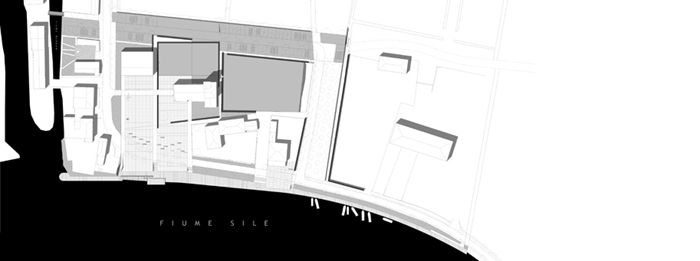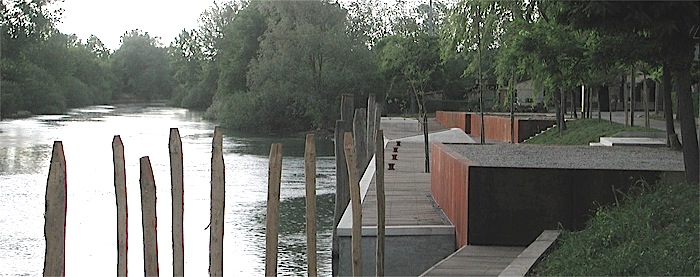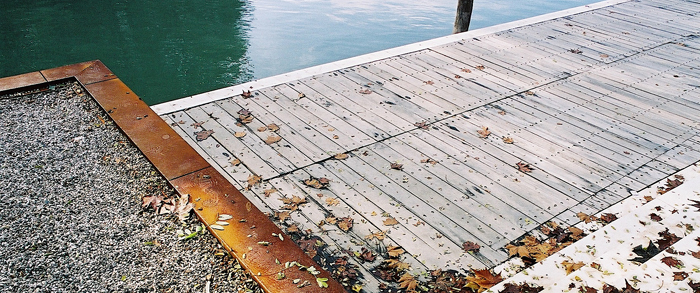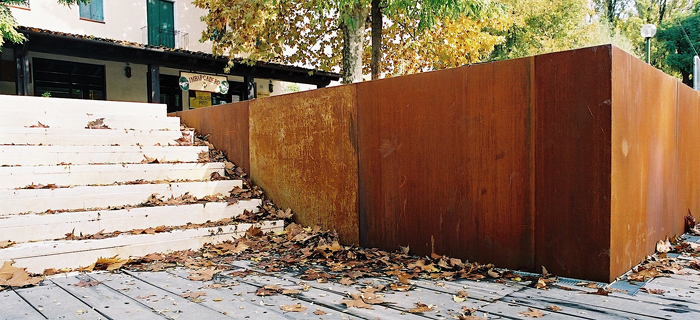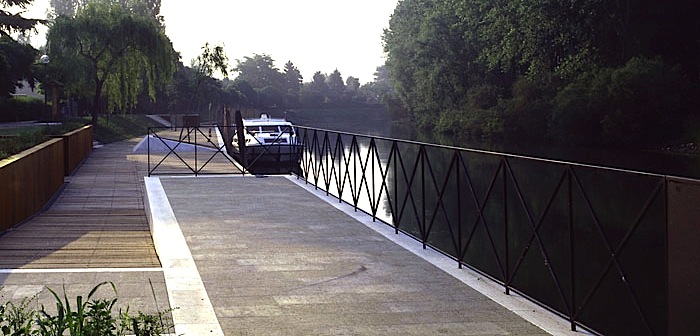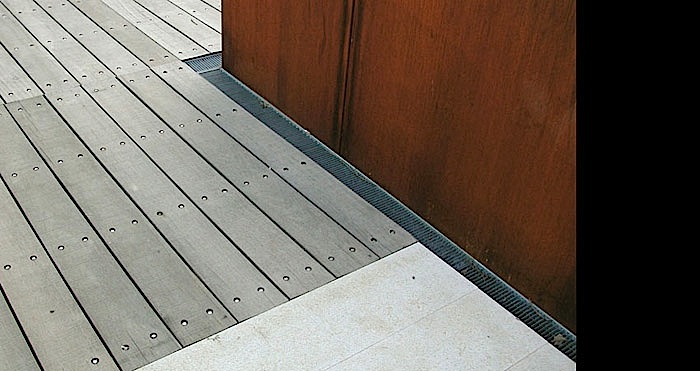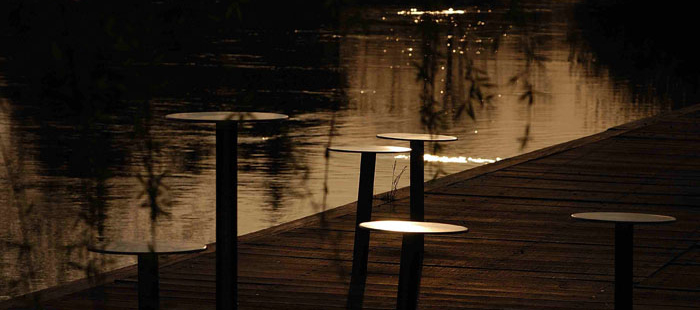The project (being undertaken in segments) is the result of a competition held by the Municipal- Administration and intended to give new impetus to the original spread of the old nucleus towards the river.
The definition of a boundary – green filter constitutes the starting point or rather the element which s structures the entire project.
It is a boundary, as already mentioned, which separates general agricultural land from the specific urbanised
environment of Cendon’s old historical nucleus facing the river. It also serves a purpose however providing a car park integrated into a green structure, defining its boundaries and relationship with the surroundings.
The project aims to regenerate the free and empty spaces without the addition of any further constructions, achieving this through the use of a language derived from the analysis of a series of signs, materials, structures and textures which are already present in loco.
” More than on the perfection of the buildings, the facilities, the individual components or diverse apparatus which occupy it, the quality of public space, in reality “depends” on the quality of the relationships which exist between these elements: the transitions, sequences and visual relationships (…) since it is the sum of these component parts which produces the stage on which the site itself is set” (Sébastien Marot, II ritmo del paesaggio, Motta Architettura).
We consider it to be fundamental that the existing buildings be restructured through the creation of a norm which regulates and controls the use of materials, colours, private vegetation and fencing (which should be removed where possible, or replaced by hedges).
The approach is based upon a programme of analysis and reorganisation of the space which is dependent on a reading of the site’s resources and its historical and geographical importance in the vision of the landscape as a public space.
The instruments which have been employed belong to the language of environmental culture hedges and trees of varying shape and height have been employed as elements of reorganisation, and their original meaning has been reinterpreted (typical “combinations” of the rural hedge are used, for example: mixed or mono-specific, according to the different purposes of division or ornamentation). Hedges are used to signal physical transition between different environments, and as a boundary structure. Trees are used to set a boundary, but also to recreate relationships/integration with that which already exists.
The levels of interaction with the place are both functional (e.g. in the link between the spaces for public use – from the car park to the church, the bar, the river) and visual.
Recognising the signs which identify the place, one engages in a dialogue through a project of the views; in the relationship with the church complex, for example, the dialogue is with the bell tower, the vertical symbol of an entire collective, or in comparison with the poplar grove in the background beyond the river which can be seen both from the water and from the road.
For the area near the river, the elements and spaces were almost “deconstructed”, so that they could be re-presented on the basis of several considerations:
1. Differentiation of the relationships between the user and the river.
This works on different levels of perception: the long wharf at a height of about 50 – 60 cm. above water-level “facilitates” a direct view of the river (short view) and makes it easier for small boats to land. The paving stones afford longer views along the river and enable the spectator to see any events which take place on the water.
2. The need to restore a link with the river, including the areas further back.
The paving stones constitute a consequential link with the areas behind. The small square opposite the social centre, the church sacristy and the open space of the bar have all been integrated into a new -system which provides a natural continuity with the spaces which extend towards the river Sile.
3. The use of raw materials.
The use of materials of which the project is composed recovers the raw qualities of the material: cor-ten steel, wood and stone. They have been used untreated to allow natural integration with the site.
Credits
Cendon di Silea, Silea (Tv), 2001 (competition first prize)
Client: Comune di Silea
Project: Made associati _ Michela De Poli e Adriano Marangon
Area: 8.000 mq
Costs: € 1.200.000,00 realizzazione per stralci
Photo: Adriano Marangon, Michela De Poli, Corrado Piccoli, Anna Lovisetto
Prize
Premio Città di Architettura Città di Oderzo 2003 – 7° edizione
Special Mention – Medaglia d’Argento al Premio Europeo di Architettura “L. Cosenza” 2004
Premio Biennale Internazionale di Architettura “Barbara Capocchin” – edizione 2005, Opera segnalata

